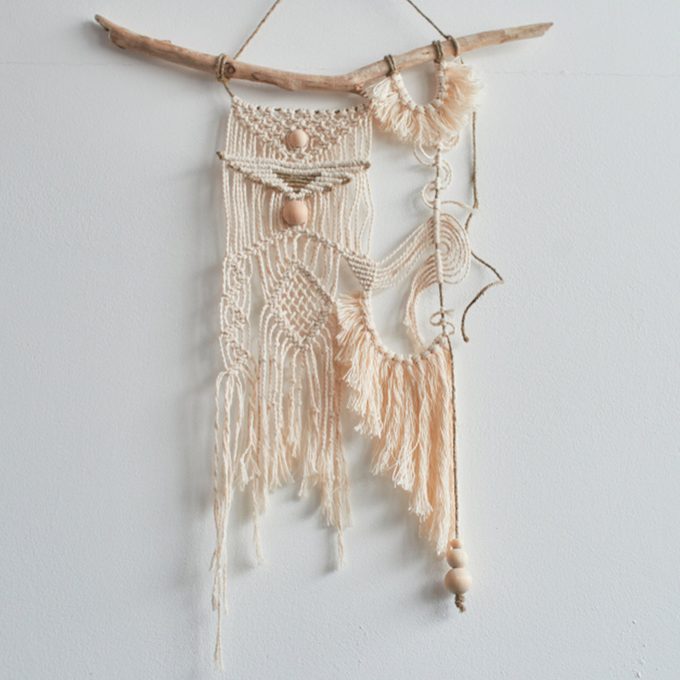What is Macramé?

Macramé is everywhere! You don't have to look far for a workshop at a yoga studio defended to showing yous how to weave together a knotty wall hanging, a drapey plant hanger or a small central chain. The combinations of boho and minimalist makes for a warm merely chichi look. If you've recently adorned your home with information technology, whether information technology was a DIY project (like this breezy macrame room divider), or picked up an already fabricated piece at the flea market or fifty-fifty TJ Maxx, your parents may exist perplexed when they visit. How did this much maligned '70s antiquity find new life in the 21st century? They asked, we answered.
See, the thing about anything creeping back from '70s decor is that it wasn't a particularly thriving time for design. Entire rooms were dedicated to avocado light-green, from the rug to the walls to the bedding, with splashes of harvest golden rounding it out. Yuck! And while those colors tin stay in the '70s, macrame is dorsum, providing comforting texture to white walls, and contrasting swimmingly with lush greenish plants.
Macrame Defined
Macramé is a type of fabric created using knotting techniques, equally opposed to weaving or knitting. The knots are square and class full-hitch and double half-hitches. The craft required only cheap and attainable materials like cotton twine, hemp, leather or yarn, with various beads used to enhance the slice.
The first accounts of macramé are credited to 13th-century Arab weavers who used extra thread to create knotted decorative threads on handmade fabrics. Third-century China is besides credited thanks to the pan chang knot—a serial of loops that weave into infinity symbols to represent longevity. Sailors are also a major part of the craft'due south beginnings in the Great Age of Sail, or the 1700s to about 1830, when they used the knots to dazzle-up their knives, bottles, and parts of the ship, while their knowledge of different types of knots were used to castling intel!
The '70s took the ornate rope work mainstream, when macramé became a popular textile that turned into tassels, placemats, plant slings in the corner, film frames, hammocks, wall hangings and fifty-fifty bikinis.
While the popularity fizzled out later on the '70s, a renewed interest was recently sparked in DIYing tutorials on YouTube and bloggers' personal sites. We're all on the crafternoon bandwagon, right?
Apartment dwellers find macramé particularly pleasing for its power to transform the many hanging house plants throughout their space as an answer to the lack of a yard, and a means for bringing the exterior in with more and more than buildings popping up and trees being cut downwardly (you should cheque out this indoor hanging herb garden, too).
And then the next time your parents wonder why you lot've gone macramé crazy, you lot tin nod to the rich history of centuries past for inspiring your craft attack.
Source: https://www.familyhandyman.com/article/what-is-macrame/
0 Response to "What is Macramé?"
Post a Comment